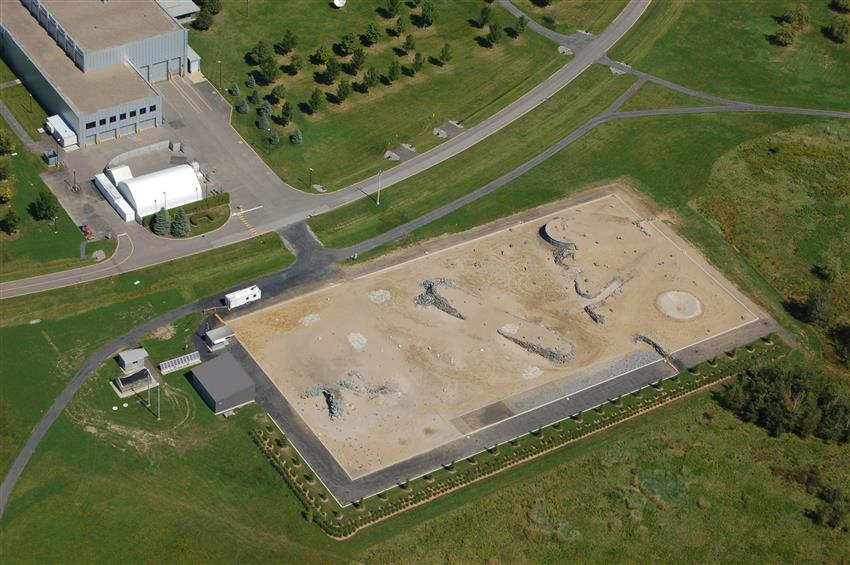Analogue terrain
Sending people and equipment on missions to the Moon or even to Mars requires years of planning and a lot of testing. And when missions get to their destination, there is no room for equipment failure. To make sure everything is thoroughly tested and launch ready, and to give operating teams the necessary preparation, simulating realistic space conditions is important.
To support this need for testing, the Canadian Space Agency (CSA) created the analogue terrain, or “Mars yard,” which replicates the geology of the surface of Mars.
The analogue terrain is used for a wide variety of tests and simulations, including:
- rovers and robotics
- navigation technologies
- mission simulation
- geological sample collection
Accessing a bit of Mars in Canada
The analogue terrain provides a rich variety of topological features that mimic those of Mars. The terrain is 60 metres by 120 metres in perimeter, which is slightly larger than a football field, and includes:
- 4 rock beds, 3 craters, 4 summits and 5 flagstone patches
- tunnel network
- replaceable rocks, that are used for drilling experiments, in the mesa rock face
- drilling shaft for deep-drilling experiments
- situational awareness camera on permanent mast
Rovers and robotics
Rovers and a number of technologies linked to robotics have been tested on the analogue terrain since its creation and, because of their importance in future missions, continue to be frequently tested on our grounds.
Navigation technologies
Navigation systems will be essential for the next steps of future space missions, especially for uncrewed missions on new terrain. Remote navigation of vehicles and advanced navigation systems need to be tested in realistic conditions to reduce the chances of a crash or a break.
Mission simulation
Just like equipment, mission operations need to be tested and honed through simulations to make sure they are mission ready. Operators can also benefit from the hands-on experience of a simulation and further develop planned operations.
Geological sample collection
Future missions to space will be driven by a desire to further our scientific understanding of other planets, and collecting samples will play an important role in achieving this. Sample collection can be a delicate operation, so testing equipment and software is crucial to ensure the success of this type of mission.

